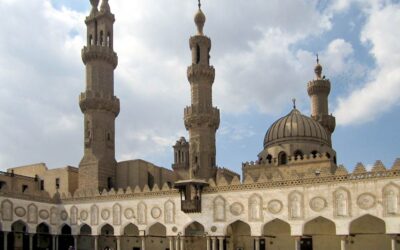Muhammad Ali Mosque
Muhammad Ali Mosque
- The Muhammad Ali Musjid, also known as the Alabaster Musjid, sits in the Citadel of Cairo in Egypt. It was built by Muhammad Ali Pasha between 1830 and 1848.
- Sitting at the top of the citadel, this Ottoman Musjid is the biggest built in the first part of the 19th century. It’s easily seen in Cairo because of its animated shape and twin minarets.
- The Musjid was made to honor Tusun Pasha, Muhammad Ali’s youngest son, who passed away in 1816. Both this Musjid and the nearby Cairo Citadel are important places to visit in Cairo.
- The Musjid was constructed on the grounds of old Mamluk buildings in Cairo’s Citadel between 1830 and 1848, but it wasn’t finished until Said Pasha’s time in 1857. Yusuf Boshnak from Istanbul was the architect, and he modeled it after the Sultan Ahmed Mosque in Istanbul. The ground where the Musjid stands was made using rubble from the old Citadel buildings.
- Before the Musjid was completed, the alabaster panels from the upper walls were taken and used for Abbas I’s palaces. The walls were then covered with wood painted to look like marble. In 1899, the Musjid started showing signs of damage, so some repairs were done. But it became so unsafe that King Fuad ordered a full restoration in 1931. It was finally finished under King Farouk in 1939.
- Muhammad Ali Pasha’s tomb is made from Carrara marble. His body was moved here from Hosh al-Basha in 1857.




